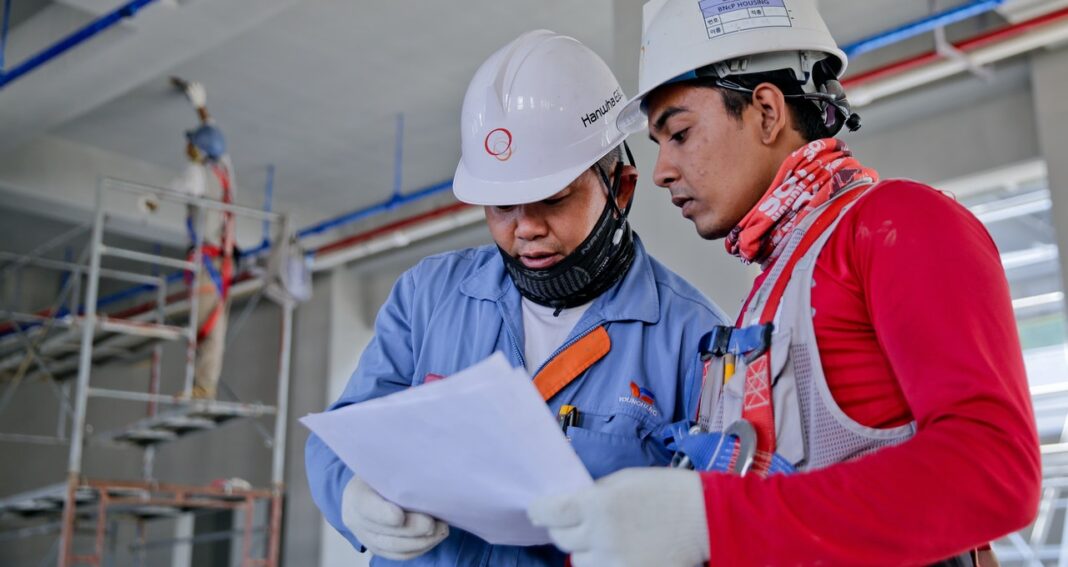Every workplace contains threats to physical and psychological safety. Every year in the U.S. alone nearly 3 million employees sustain illness or injury due to work. This does not count the even greater psychological toll from being bullied and mistreated at work. Organizations in high risk industries might focus on the obvious physical conditions that can harm employees, but too often the psychological conditions are ignored. But both physical safety and psychological safety are equally important in creating safety at work. To achieve both, managers need to know how to boost total workplace safety.
Two Sides to Workplace Safety
Safety programs at work typically focus on the physical threats that can produce accidents, injuries, and illnesses. Their approach involves a combination of ergonomic design of the physical space and safety leadership that focuses on employee safe behavior. Areas of concern include:
- Falls from ladders and on slippery floors
- Motor vehicle accidents
- Exposure to infectious disease
- Exposure to toxic chemicals
- Repetitive strain from too much of the same activity (e.g., typing)
- Workplace violence
The often overlooked side of total workplace safety is psychological safety that can be threatened from being the target of abuse, bullying, and general mistreatment from others. Being psychologically assaulted is a common occurrence that can occur in any job. Mistreatment comes from colleagues at work including coworkers and supervisors. It can take many forms, but mistreatment can involve one or more of the following acts.
- Attacked for one’s opinion
- Being cursed or yelled at
- Being the target of ridicule
- Excluded from activities and conversations
- Having efforts to do a good job sabotaged by others
- Insults
- Opinions ignored and not taken seriously
- Put downs based on gender, race or other personal characteristics
It is obvious how unsafe working conditions and risky employee behavior can lead to accidents and injury. Less obvious is that being mistreated can lead to psychological harm that in many cases can be extreme. Mistreatment can worsen mental health problems, contribute to substance abuse, and lead to post-traumatic stress. Even mild mistreatment can cause emotional distress that can hurt job performance. Furthermore, such behavior makes it difficult to maintain good working relationships and can undermine teamwork. Finally, the stress of mistreatment contributes to physical safety by making employees more vulnerable to accidents and injuries.
How to Boost Total Workplace Safety
To boost total workplace safety, management should build an organizational climate that focuses on both the physical and social workplace environment. An organizational climate focuses on a particular outcome (safety) by the use of policies and practices that encourage appropriate (wearing safety gear) and discourages (insulting colleagues) others. It is best instituted from the top of the organization through both policy and leadership. A total workplace safety climate supports physical and psychological safety. For physical safety this means following safety protocols, wearing safety gear, and avoiding risky behavior. For psychological safety it means creating a working environment where people treat one another with respect and tolerance. People are accepted for who they are, and everyone is made to feel like a welcome addition to the organization. True psychological safety means that people are free to express opinions without fear of personal attack. Such climates encourage open discussion and debate that can promote innovation and the sharing of ideas.
Building Climates
The best way to build a total workplace safety climate is for top management to embrace it as an important organizational value. A value statement and expressed policies should be written that clearly articulates safety as an important goal for the organization. For example, Tampa Electric Company’s mission statement notes that safety is their most important value. Such statements are important because of the clear message it conveys to employees, but it is only the beginning. Building and maintaining climates means.
- Setting policies that note behaviors that are expected and behaviors that are to be avoided.
- Being sure that policies are translated into practices. Policies that are ignored will have no effect on climate.
- Managers at all levels need to talk about safety both inside and outside of meetings. Top level managers should talk about its importance. Immediate supervisors should have frequent discussions about practical safety issues that arise on a day-to-day basis.
- Safety training should be provided. Employees need to learn how best to work safely, and they need to be encouraged to make efforts to keep everyone safe.
- Managers should take appropriate corrective action when safety violations occur. This is true for both physical and psychological safety. Supervisors should be prepared to mediate conflict among subordinates, and to discourage people from attacking and mistreating one anther.
- Organizational leaders should model safety behaviors. From top to bottom of the organization, everyone should do their best to practice physical and psychological safety.
Photo by Anamul Rezwan from Pexels
SUBSCRIBE TO PAUL’S BLOG: Enter your e-mail and click SUBSCRIBE
